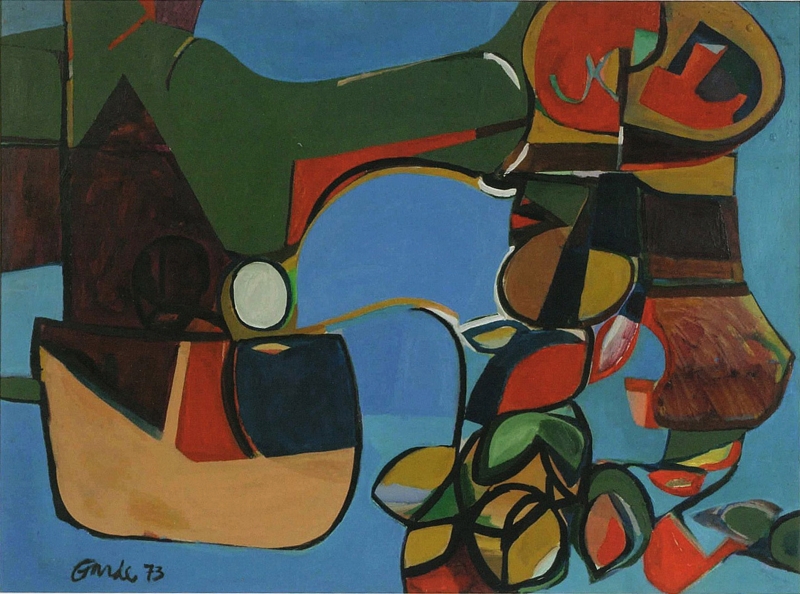About Harold Garde
A native New Yorker and the son of immigrant parents from Central Europe, Harold Garde graduated from the prestigious Stuyvesant High School and attended City College. He enlisted in the Army Air Force in 1942 and was stationed in the Philippines. Following the war, he took advantage of the G.I. Bill to continue his education at the University of Wyoming.
At the University of Wyoming Garde studied with George McNeil, a veteran of the Hans Hofmann School and the Federal Art Project and a forceful expressionist painter. Garde also studied with the prominent Russian Constructivist, Ilya Bolotowsky from whom Garde learned lessons about structure and composition which have remained with Garde throughout his career. In 1948, Leon Kelly joined the faculty, bringing with him a strong understanding of Surrealism and first-hand knowledge of the Surrealist refugee artists who exhibited with Kelly at the Julian Levy Gallery in New York. This meant that compressed into Garde’s studio experience were three of the major forces in the art of the day: expressionism, abstraction and surrealism, all of which can be seen at play in his approach to painting.
After returning to New York, Garde attended Columbia University where he received an MA in Fine Arts and Art Education. His paintings of the 1950s, with their strong angular brushstrokes and sustained intensity reflect his involvement with Abstract Expressionism. In subsequent decades, Garde introduced representational and narrative elements to his paintings. These images of and mysterious.
One of Garde’s significant innovations is the “Strappo” technique of transferring dry opaque acrylic painting from a glass surface to a canvas. The process is a cross between monotype and painting that allows him to make use of what he considers the best qualities of each. With the Strappo technique Garde can incorporate new layers of painting on to larger canvases, adding to the work’s complexity.
Garde’s work is in the collections of the Museum of Florida Art, DeLand, Florida; Portland Museum of Art, Portland, Maine; Farnsworth Museum, Rockland, Maine; and Fine Arts Museum of New Mexico, Santa Fe; Print Library Metropolitan Museum of Art, New York; among others. Currently he lives and works in Belfast, Maine and New Smyrna Beach, Florida.








